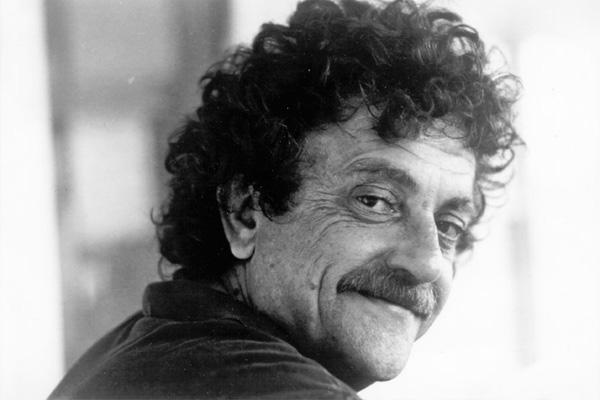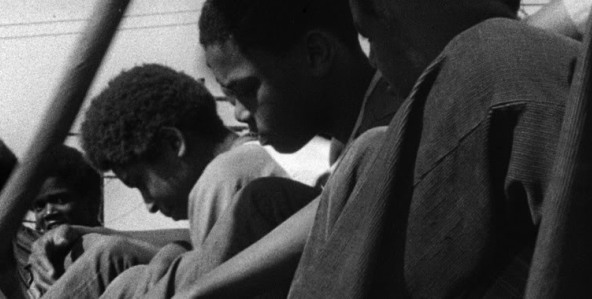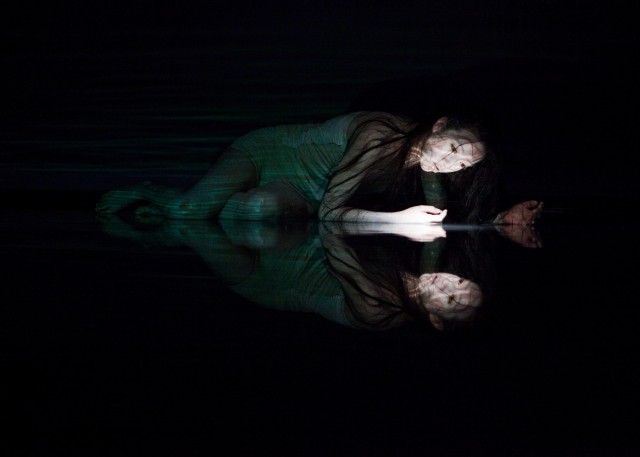
Ximena Garnica reflects on the return of FLOATING POINT WAVES to HERE (photo by Piotr Redliński)
FLOATING POINT WAVES
HERE
145 Sixth Ave. at Dominick St.
April 10-14, 8:30, $20
212-647-0202
www.here.org
Artistic directors of LEIMAY, CAVE, and the New York Butoh Festival, dancer-choreographer Ximena Garnica and video installation artist Shige Moriya collaborate on works that beautifully integrate sound, movement, and image. In such pieces as Furnace, Trace of Purple Sadness, and Becoming, they’ve created immersive, meditative environments that subtly dazzle the mind. They’re currently in the midst of a two-week run of Floating Point Waves, an evening-length show they first presented in January 2011 at HERE’s Culturemart festival as part of the downtown institution’s Artist Residency Program. In between working on Floating Point Waves and preparing for the inaugural SOAK Festival, which begins April 25, they answered some questions for our latest twi-ny talk.
twi-ny: We saw Floating Point Waves when it was presented as a work-in-progress at HERE’s Culturemart festival last year. How has it evolved since then?
LEIMAY: The Floating Point Waves process has been a bit like the formation of those things inside a limestone cave called stalagmites. That kind of formation rises from the floor of a limestone cave due to the dripping of mineralized solutions over long periods of time. Last year the piece itself needed more time for the dripping to carve new forms and uncover new colors. Last year we had found new elements, such as two new kinetic systems — the point sculpture and the tulle tubes — but had not fully integrated them to the level of the other two (pool & string sculpture). The pool and the string sculpture had been worked longer. In the creative process and especially in Floating Point Waves, time is very important. There is something about cooking on a small flame, no?
twi-ny: Indeed. The two of you have been collaborating now as LEIMAY for many years. What is the best thing about working together?
LEIMAY: We were born in very different places, Japan [Moriya] and Colombia [Garnica]. We speak very different languages and communicate in a third language. We were educated very differently, and growing up we studied different things, but somehow we share similar values. So the best thing is when through the work we make together, despite all our differences, somehow we can connect and find the essence of whatever it is we are creating. This might sound vague, but think about those so called “aha moments”; if you have them alone it is great, but when you have them together it is beyond words! However, sometimes those “aha moments” don’t come and one of us is stuck but the other can keep going — that is great too; there is some generosity involved and lots of love.
twi-ny: What is the worst thing about working together?
LEIMAY: When we are totally disagreeing about something and the more we talk the more we disagree but then suddenly we realize that we actually agree but our English is so off that it all seems like a disagreement . . . but in fact it was a lost-in-translation moment. It is awful.
twi-ny: Much of what you do is rooted in the butoh discipline. What is the most misunderstood aspect of butoh?
LEIMAY: Well, we like to say that our work ranges from photography to video art, art installations, interdisciplinary performances, and training projects. And although it is true that Ximena has been training with butoh artists and masters for the past twelve years, our performances and training projects are rooted in the body. What is really at stake is the body. Our contact with butoh has opened our mind to thinking about and questioning the meaning of the dancing body and its possible relationships with space and time.
For audiences, perhaps the most misunderstood aspect of butoh is the expectation of white body-painted people moving slow with grotesque faces and a bit of drooling. For performers, perhaps the most misunderstood aspects are 1.) the mystification of master teachers and of butoh itself and 2.) the view of butoh as a codified form.
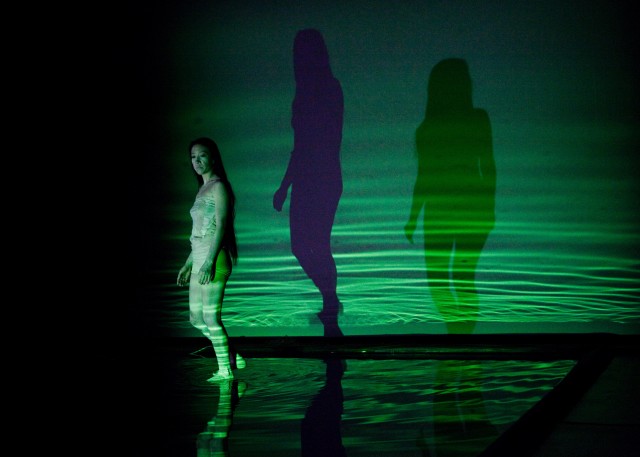
FLOATING POINT WAVES is another subtly dazzling collaboration between Ximena Garnica and Shige Moirya (photo by Piotr Redliński)
twi-ny: You’ve been organizing the New York Butoh Festival since 2003, and this year you’re staging the first SOAK Festival. What can people expect to see in this new festival?
LEIMAY: Actually, the SOAK Festival is taking over the New York Butoh Festival. In the spirit of the interdisciplinary nature of our creations and of the ecology from which our work sprouts, we are launching the first annual SOAK Festival. People can expect nothing. Yes, it is true: We want people to come without expectation. They are invited to our home to meet our friends. We have a good sense for assembling acts and we have an eclectic group of friends and colleagues and, most importantly, we want to share their work with those who make it out to Williamsburg.
This year we will have a deluge of acts and workshops from April 25 to May 13. Opening the festival are an experimental guitarist from Sicily, Ninni Morgia, and his partner, vocalist Silvia Kastel. Next is an unplugged version of a collaboration between butoh legend Ko Murobushi and San Francisco’s Shinichi Iova-Koga of inkBoat. The festival will continue with work from CAVE resident artists such as Russian theater innovator and international master teacher Polina Klimovitskaya and choreographer Rachel Cohen. Former Fulbright Fellow and Movement Research resident Ben Spatz and his theater partner Maximilian Balduzzi are also among those performing. The SOAK Festival workshops are equally eclectic, such as a drawing mural narrative workshop by Tijuana-born, Brooklyn-based draftsman artist Hugo Crosthwaite, an augmented reality lecture/demonstration by NYU teacher and activist Mark Skwarek, a sonoric voice workshop by Uruguayan vocal virtuoso Sabrina Lastman, as well as our own workshop led by Ximena on our training and performance technique called Ludus.
It seems to us like we all see life and performances and things with our own frame. Through our work and the production of the SOAK Festival we challenge ourselves and our audiences to make these frames as malleable as possible so we can expand our understanding of the body and our experience and understanding of daily life. Consequently, we enlarge the realms of perception and creation and discover the possibilities for interaction therein. We hope all of you reading this will make it out to CAVE for the first SOAK Festival.
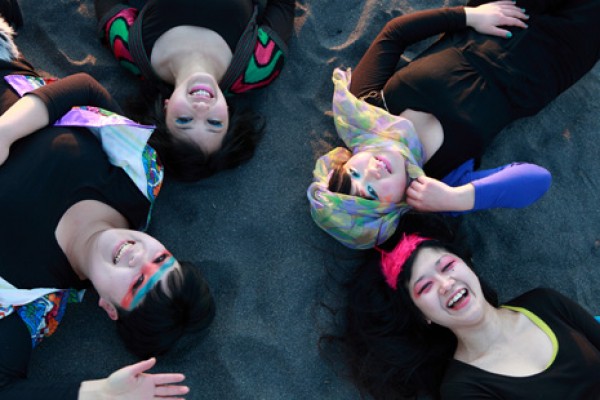

 Learning of many of the horrible things the Third Reich was doing, Charlie Chaplin could not hold his tongue anymore, finally making his first talking picture in 1940. In The Great Dictator, writer-director-producer Chaplin unrelentingly mocks Adolf Hitler and the rise of the Nazis in Germany, albeit with a very serious edge, as WWII threatens. Chaplin plays the dual roles of a simple Jewish barber living in the ghetto (who has elements of the Little Tramp) and Adenoid Hinkle, the rather Hitler-esque Fascist leader of the country of Tomania. Just as he named the nation after a foodborne illness (ptomaine poisoning), Chaplin does not go for subtlety in the film; his right-hand man is Herr Garbitsch (Henry Daniel spoofing Nazi Minister of Propaganda Joseph Goebbels), and his military mastermind is Field Marshal Herring (Billy Gilbert making fun of Heinrich Himmler). Chaplin plays Hinkle like a cartoon character, with pratfalls galore, and when he speaks in German, especially when he gives a major speech, he spits out fake German words with a smattering of funny English ones. When he learns that Benzino Napaloni (Jack Oakie as a melding of Benito Mussolini and Napoleon Bonaparte) has gathered his troops on the Osterlitz border (think Anschluss), Hinkle invites the Bacteria dictator to his Tomanian palace, where they engage in numerous hysterical bouts of one-upmanship, including a riotous battle involving barber chairs. Meanwhile, Chaplin performs another of the film’s most memorable scenes, the shave of an old man set to Brahms’s “Hungarian Dance No. 5.” But when Commander Schultz (Reginald Gardiner) leaves the Nazi regime and decides to help the Jewish people in the ghetto, Hinkle sends his stormtroopers out to find the traitor, leading to a major case of mistaken identity and a heartfelt, if overly melodramatic, finale. In addition, Chaplin’s lover at the time, Paulette Goddard, plays Hannah (named for Chaplin’s mother), a young Jewish woman living in the ghetto, and Bowery Boys fans will recognize Bernard Gorcey, who played sweet-shop owner Louie Dombrowski in the goofy film series, as Mr. Mann.The Great Dictator is filled with marvelous moments, from Hinkle dancing with a balloon globe to several of the Jews in the ghetto trying to hide in the same chest, but the film does suffer from pedagoguery in making its political points, and some of the slapstick is too lowbrow. Nominated for five Oscars, it falls somewhere between the Marx Brothers’ Duck Soup (1933) and the Three Stooges’ You Nazty Spy! (1940) while also referencing the 1921 silent film King, Queen, Joker, in which Chaplin’s older half-brother, Sidney (who also directed), played the dual role of a modest barber and the king of the fictional Coronia. A seminal achievement that was supposedly seen by Hitler twice, The Great Dictator is screening April 13 at 9:30 as part of the Rubin Museum series “You Must Remember This,” focusing on memory in conjunction with its current
Learning of many of the horrible things the Third Reich was doing, Charlie Chaplin could not hold his tongue anymore, finally making his first talking picture in 1940. In The Great Dictator, writer-director-producer Chaplin unrelentingly mocks Adolf Hitler and the rise of the Nazis in Germany, albeit with a very serious edge, as WWII threatens. Chaplin plays the dual roles of a simple Jewish barber living in the ghetto (who has elements of the Little Tramp) and Adenoid Hinkle, the rather Hitler-esque Fascist leader of the country of Tomania. Just as he named the nation after a foodborne illness (ptomaine poisoning), Chaplin does not go for subtlety in the film; his right-hand man is Herr Garbitsch (Henry Daniel spoofing Nazi Minister of Propaganda Joseph Goebbels), and his military mastermind is Field Marshal Herring (Billy Gilbert making fun of Heinrich Himmler). Chaplin plays Hinkle like a cartoon character, with pratfalls galore, and when he speaks in German, especially when he gives a major speech, he spits out fake German words with a smattering of funny English ones. When he learns that Benzino Napaloni (Jack Oakie as a melding of Benito Mussolini and Napoleon Bonaparte) has gathered his troops on the Osterlitz border (think Anschluss), Hinkle invites the Bacteria dictator to his Tomanian palace, where they engage in numerous hysterical bouts of one-upmanship, including a riotous battle involving barber chairs. Meanwhile, Chaplin performs another of the film’s most memorable scenes, the shave of an old man set to Brahms’s “Hungarian Dance No. 5.” But when Commander Schultz (Reginald Gardiner) leaves the Nazi regime and decides to help the Jewish people in the ghetto, Hinkle sends his stormtroopers out to find the traitor, leading to a major case of mistaken identity and a heartfelt, if overly melodramatic, finale. In addition, Chaplin’s lover at the time, Paulette Goddard, plays Hannah (named for Chaplin’s mother), a young Jewish woman living in the ghetto, and Bowery Boys fans will recognize Bernard Gorcey, who played sweet-shop owner Louie Dombrowski in the goofy film series, as Mr. Mann.The Great Dictator is filled with marvelous moments, from Hinkle dancing with a balloon globe to several of the Jews in the ghetto trying to hide in the same chest, but the film does suffer from pedagoguery in making its political points, and some of the slapstick is too lowbrow. Nominated for five Oscars, it falls somewhere between the Marx Brothers’ Duck Soup (1933) and the Three Stooges’ You Nazty Spy! (1940) while also referencing the 1921 silent film King, Queen, Joker, in which Chaplin’s older half-brother, Sidney (who also directed), played the dual role of a modest barber and the king of the fictional Coronia. A seminal achievement that was supposedly seen by Hitler twice, The Great Dictator is screening April 13 at 9:30 as part of the Rubin Museum series “You Must Remember This,” focusing on memory in conjunction with its current 


